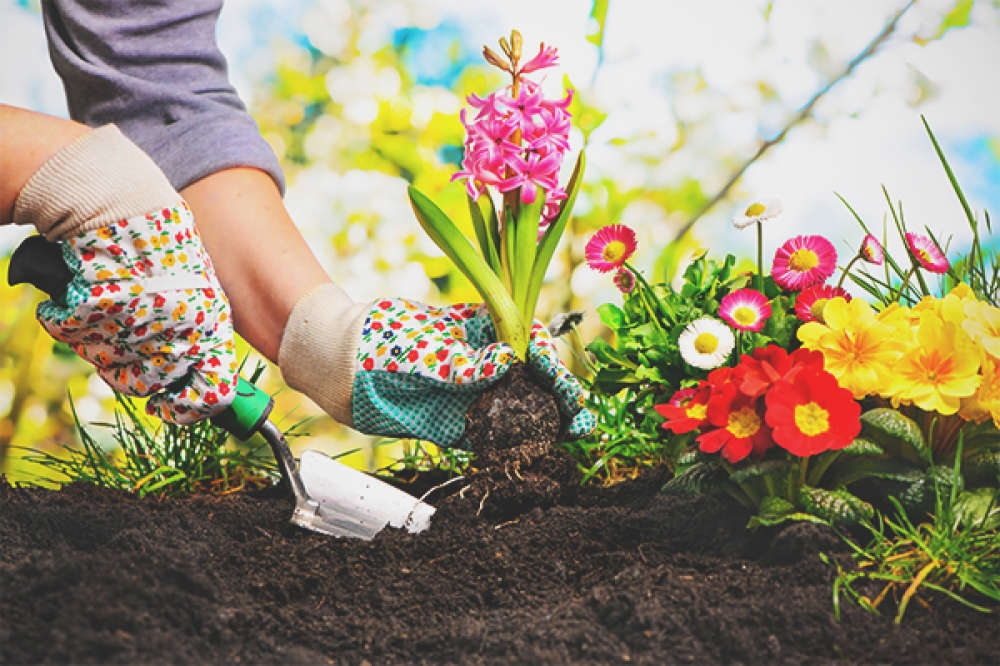Kickstart Your Gardening Journey: Building the Perfect Gardening Kit for Beginners
Wiki Article
The Ultimate Overview to Gardening for Beginners: Step-by-Step Tips and Strategies for Growing a Flourishing Garden
Are you ready to study the globe of gardening? Look no more than "The Ultimate Guide to Horticulture for Beginners." This step-by-step guide will certainly stroll you with whatever you need to understand to grow a successful yard. From comprehending your garden area to selecting the right plants and preparing the soil, we've got you covered. Obtain prepared to release your green thumb and produce a beautiful, prospering yard.Understanding Your Yard Area
Recognizing your yard area is necessary for producing a thriving garden. This will aid you determine which plants will thrive in each area. gardening for beginners.Next, examine the dirt in your garden. Comprehending your soil type will certainly lead you in selecting the right plants and implementing ideal dirt amendments. This info will aid you make educated choices about watering and plant positioning.
These are small locations that may differ in temperature or wetness levels contrasted to the rest of your yard. Utilize these variations to your benefit by planting heat-loving or moisture-loving plants in these locations.
Picking the Right Plant Kingdoms

Next, consider your gardening goals and preferences. Are you wanting to grow veggies, flowers, or a mix of both? Do you choose low-maintenance plants or are you going to put in extra effort for high-yield crops? Think of the quantity of time, energy, and sources you are willing to buy your yard.
Additionally, take into consideration the room readily available in your garden. Take measurements and plan out the design of your plants. Take into consideration the fully grown size of each plant and make certain they have adequate area to grow without congestion each other.
Finally, think of the functionality of your plant options. home gardening for beginners. Will you be able to supply the needed care and upkeep for your chosen plants? Take into consideration factors such as watering, feeding, pest control, and trimming
Preparing the Soil for Planting
Once you have actually chosen the best plants for your growing garden, it's time to study the important task of preparing the soil for planting. Prior to you start excavating, it's essential to examine the top quality of your soil. Take an example and examination its pH levels, as different plants flourish in different try this out pH ranges. Adjust the pH if required by including lime to elevate it or sulfur to decrease it.
Once the soil prepares, create furrows or openings for planting. The depth and spacing will depend on the details needs of your chosen plants, so refer to the seed packets or plant tags for advice. Gently put the plants in their assigned places, making sure that the roots are covered with dirt. Strongly press the soil around the base of each plant to get rid of any kind of air pockets.
As you water, be careful not to wash away the dirt or damages the delicate plants. With proper soil prep work, your yard will certainly be well-appointed to support the development and success of your plants.
Watering and Feeding Techniques
After preparing the link dirt for growing, it's essential to understand effective watering and fertilizing methods to make sure the wellness and development of your yard. One means to assess if your plants require watering is by sticking your finger about an inch right into the dirt. When watering, aim for the base of the plants, as moistening the fallen leaves can urge diseases.Maintaining a Healthy And Balanced Yard
To keep a healthy and balanced yard, you need to routinely check your plants for signs of illness or pests. By doing this, you can catch any issues early and take the necessary steps to stop them from triggering and spreading damages to your entire garden. Try to find any uncommon places on fallen leaves, yellowing or wilting foliage, or holes in the fallen leaves, as these can be signs of diseases or bugs. It is important to take instant action. if you observe any of these indications.Another technique is to urge valuable bugs like lacewings and ladybugs, which feed on garden insects. Growing flowers such as sissies, marigolds, and sunflowers will draw in these advantageous bugs to your yard.
In addition to pests, illness can also impact your plants. To stop the spread of diseases, it is very important to exercise great yard hygiene. This includes eliminating any type of infected plants or leaves, sanitizing your horticulture devices, and avoiding over-watering. Proper spacing in between plants and excellent air flow can also help avoid the spread of diseases.
Conclusion
By recognizing your garden space, choosing the right plants, preparing the soil, and executing proper watering and fertilizing strategies, you can create a successful garden. With persistence and devotion, you'll quickly be delighting in the elegance and bounty of your own flourishing yard.Make use of these variants to your benefit by planting moisture-loving or heat-loving plants in these areas.

Report this wiki page